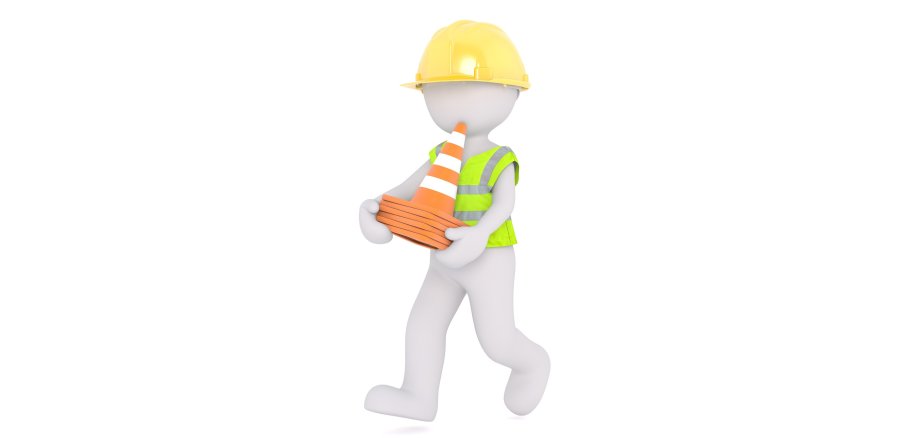The LBM informs: B 51 - rehabilitation between Konz and Trier
From Wednesday, September 14th, the LBM will be renovating the section between the railway bridge at Feyen and the railway bridge at Karthaus. This should be done in stages.
In the first construction phase, it is planned to rehabilitate the two-lane area in front of the Karthaus railway bridge (coming from Trier) over a length of around 270 m. This must be done while the B 51 is completely closed, but this will probably only last 6 days.
The diversions were optimized again in order to keep the impact on all traffic participants as low as possible despite the construction work. Road users coming from Trier in the direction of Luxembourg/Wasserliesch/Saarburg are diverted via the K134 through Konz to the intersection of Schillerstraße and Granastraße and from there via the Luxemburger Damm to the Möbel Martin Kreisel back to the B 51 or B 419.
Coming from Luxembourg/Wasserliesch, road users are guided from the Martin roundabout along the banks of the Moselle to the roundabout on Grana-/Saarstraße (donut roundabout) and from there they are diverted through Konz via the K134 to Trier.
In the second phase of construction, the B 51 will be connected to the K 134. This means that in this construction phase the two connecting ramps from the B 51 to the K 134 and vice versa will be built. Of course, this must also be done with the K 134 completely blocked.
Traffic is then routed via the B 51 to the Möbel Martin roundabout in Konz and vice versa. Approximately two weeks of construction time are required for the renovation of the two connecting ramps.
At the same time, the carriageway from Konz to Trier will be closed in the four-lane area of the B 51 (4th construction phase) so that construction work can begin here as well. This section, which is divided again at the entrance to the Löllberg so that it can always be maintained, must also be built under full closure.
Here traffic is routed via the Konz lane in oncoming traffic.
The last construction phase (3rd construction phase) provides for the renovation of the carriageway from Trier to Konz. Here, oncoming traffic is routed via the carriageway from Trier to Konz.
The renovation of the third and fourth construction phase each takes around 6 weeks of work.
The Hotel Estricher Hof and the Löllberg residential area can be reached via the existing driveway throughout the entire construction period.
The federal highway, which is loaded with around 28,000 vehicles/24h, is one of the busiest roads in the Trier area. The existing road surface cannot withstand this traffic load, which inevitably leads to cracks and dents in the road, which make rehabilitation necessary.
In detail, it is planned to completely remove the existing asphalt structure and to re-profil the frost protection. This is then solidified with cement. Subsequent to this work, the new asphalt layers will be installed again in sufficient layers. In addition, the existing drainage facilities will be repaired. The existing mastic asphalt gutters will be renewed.
But the construction route has another special feature. The Federal Ministry of Transport and Digital Affairs has asked the state mobility agency to build test routes with temperature-reduced rolled asphalt, which should serve to collect experience, because according to the current status, a new workplace limit value for vapors and aerosols from bitumen is to be introduced from 2025, which will make the use of temperature-reduced asphalt mandatory makes necessary. The federal government specifies a certain requirement profile for the test stretches and a nationwide, systematic approach so that the knowledge gained from this can also be compared.
In such a test track, tracks with conventionally manufactured asphalt and with temperature-reduced asphalt are built according to a precisely specified pattern in order to create a comparability of these tracks.
So far, the workplace limit just mentioned is 15mg/m3. From 2025, this should then be reduced to 1.5 mg/m3. These pollutant reductions can only be achieved by lowering the mixing and paving temperatures of the asphalt pavement by at least 20 degrees Celsius.
The aim is to change the viscosity, i.e. the flowability, of the asphalt mixture in such a way that it also allows installation at lower production temperatures. This happens through certain additives in the bitumen, which can be organic, mineral or chemical and have different modes of action.
It is very important for the federal government to compile a collection of experiences in order to be able to approve products that have already proven their worth without major evidence.
However, the future workplace limit value to be achieved cannot be achieved simply by lowering the installation temperature. In addition to this, it is necessary to equip the asphalt pavers with an extraction system so that the noxious vapors do not reach the construction site personnel in the first place.
The costs of this measure amount to around 2.3 million euros at the expense of the Federal Republic of Germany.
The contractor is the bidding consortium Köhler Strassenbau and C. Schnorpfeil from Trier.
The LBM Trier asks all road users for patience and understanding for the unavoidable impairments during the construction period.

